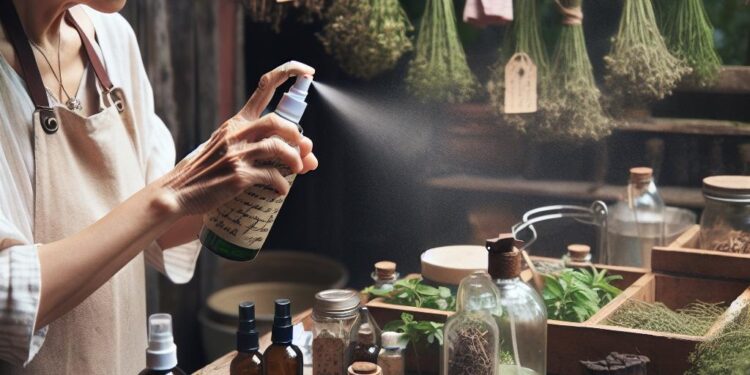In uncertain times or when you’re off the grid, knowing how to make your own natural antiseptic spray can be a lifesaver. Imagine you’re in the wilderness and you need to clean a wound—having this skill can prevent infections and promote healing. It’s a practical technique often overlooked in survival scenarios, yet incredibly vital. Many people assume antiseptic sprays are complex to make, but with the right guidance, you can create them easily. This blog breaks down everything you need to know, providing clear advice and realistic solutions. Master this skill and increase your preparedness for any emergency.
How Do You Make Natural Antiseptic Spray?
When you’re out there in the wild, relying on your instincts and know-how, having a natural antiseptic spray in your survival kit isn’t just an added bonus—it’s essential. Imagine you’re on a remote trail, a good two-day hike from the nearest town. Suddenly, you trip, land awkwardly, and scrape your knee against a jagged rock. A small injury, sure, but it could become problematic without the right care. That’s where your homemade antiseptic spray comes in. Made from common ingredients like tea tree oil or witch hazel, it cleanses wounds naturally. This is especially handy in off-grid living, where supplies aren’t always readily available, and you prefer to use natural solutions. You’re prepared, self-reliant, and ready for what nature throws your way. Plus, you know exactly what’s in your spray—no mystery chemicals here, just pure, simple effectiveness. It’s like carrying a touch of home remedy wisdom right in your pack.Survival Benefits of Crafting Your Own Antiseptic Spray
When you delve into making your own natural antiseptic spray, you equip yourself with an invaluable skill for both survival scenarios and everyday use. Here’s why it’s a game-changer:- Enhanced Survival Readiness: Knowing how to craft your own antiseptic spray means you’re never caught off guard in the wild, regardless of your environment.
- Increased Safety: A natural antiseptic ensures that any cuts or wounds sustained outdoors are quickly cleaned, reducing the risk of infections.
- Gear Efficiency: It’s one less item to pack. By making your own, you optimise your backpack space and carry lighter, multi-purpose supplies.
- Maintain Health in Emergencies: In a pinch, having a natural antiseptic can mean the difference between a minor wound and a serious health issue.
- Reduced Reliance on Modern Systems: Create your own spray and gain confidence in your ability to rely less on store-bought products and more on nature’s resources.
- Eco-Friendliness: Using natural ingredients means you’re making an environmentally friendly choice, which is sustainable and aligns with protecting the wilderness you love.
- Cost Efficiency: Over time, creating your own antiseptic becomes a cost-saving option, freeing up resources for other essential survival gear.
Daily Uses for Natural Antiseptic Spray
- Start by gathering the ingredients like vinegar, water, and essential oils, and keep them handy in your urban or rural home for easy access.
- Use it in urban settings by applying the spray to minor cuts or scrapes encountered during daily activities, ensuring to carry a small bottle in your bag.
- In rural scenarios, rely on the spray during outdoor tasks such as gardening or hiking, where natural antiseptics can be a practical choice.
- Incorporate into your survival kit: Store the spray in a robust, leak-proof container and include it in your bug-out bag for emergencies.
- Regularly check and replenish your supplies to maintain an effective, fresh stock, helping you stay prepared for any minor injury or wound.
- As part of a broader prep plan, pair with other first-aid essentials like bandages and ointments to enhance your overall readiness.
DIY Tips & Use: Crafting Natural Antiseptic Spray
- Gather ingredients: tea tree oil, lavender oil, distilled water, and white vinegar.
- Mix 20 drops of tea tree oil and 10 drops of lavender oil in a spray bottle.
- Add half a cup each of distilled water and white vinegar; shake well.
- Use on minor cuts and scrapes to prevent infection.
- Ensure proper storage: keep away from direct sunlight.
Efficient Antiseptic Spray in Minutes and on Budget
Before diving into making your own natural antiseptic spray, consider the costs and time commitment involved in its preparation.| Aspect | Cost | Time/Effort |
|---|---|---|
| Essential Oils | £10 – £20 | Minimal; easy to source online or in stores |
| Base Liquid (e.g., witch hazel, vinegar) | £5 – £10 | Minimal; available in health shops |
| Spray Bottles | £2 – £5 | Minimal; often reused from previous bottles |
| Mixing Ingredients | No cost if at home | 15 – 30 minutes; simple mixing |
| Learning Process | No monetary cost | 1 – 2 hours; online tutorials |




